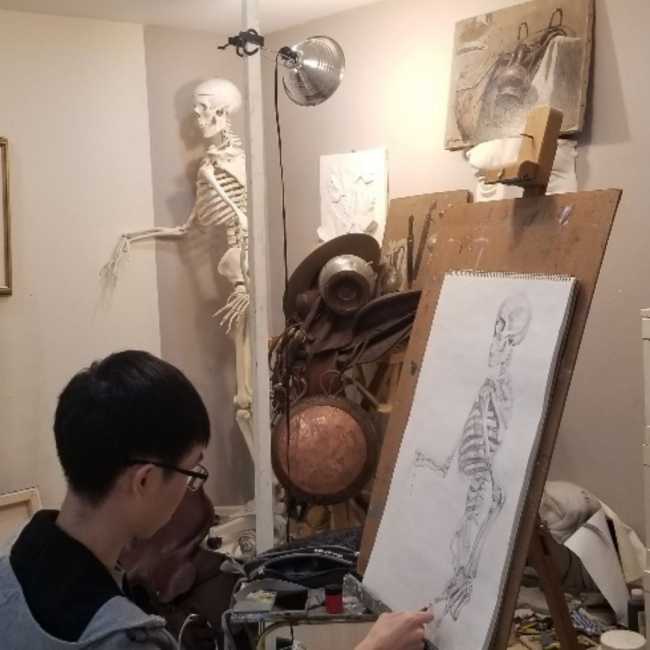Phone: (647) 894 7706

Drawing classes play an important role in the mental and creative development of young children. Concepts such as line drawing are a staple in drawing classes for kids. But what constitutes a line drawing? In its essence, it is a form of drawing in the most basic sense that uses lines to represent forms, shapes and objects. In this blog, VR School of Art, a major art and oil painting classes provider, explores 5 major types of line drawings that every child must master to become a promising artist.
These are the simplest form of line drawing. It can be drawn horizontally, vertically, and diagonally. It can be used to create geometrical shapes, create boundaries, and used to make a solid, stable structure.
The next level to line drawing is curved lines. These features include curves, loops, and more natural shapes to depict an object or form. Curved lines are an excellent way to add fluidity to the drawing, and as a result, they are used to depict objects in nature.
Zigzag lines feature lines and patterns with sharp turns and angles. Due to the nature of extremeness, zigzag lines are excellent ways to represent energy chaos in a drawing.
As the name suggests, dashed lines represent a series of short lines instead of one continuous line. Dashed lines are used in drawing classes for kids to represent non-tangible concepts such as sound waves and movement.
Thick and thin lines can be used in line drawing to convey more depth or meaning to one part of the drawing than the other. They can also be used to represent the location of the object with respect to the viewer. For instance, thick lines represent objects closer to the viewer, whereas thin lines represent objects placed at a distance.
Looking to enroll your child in drawing classes for kids? Reach out to us at VR School of Art today. As one of the leading drawing classes in Toronto, we also offer oil painting classes, landscape painting, advanced drawing classes and more for our students. For more information, contact us at 647-894-7706.